The experience of combat use of US-based cruise missiles and the main trends in their development
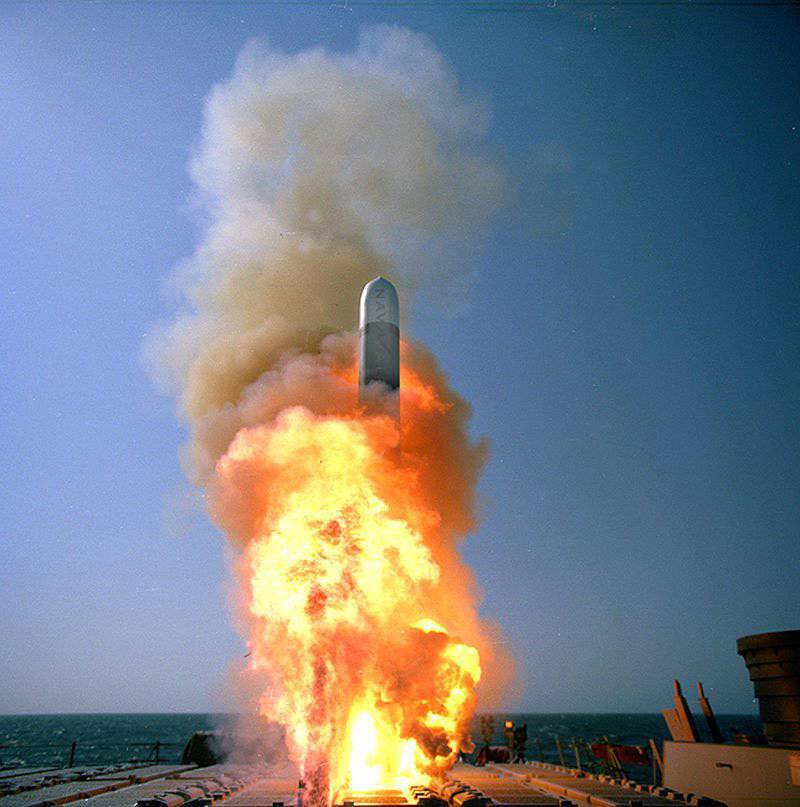
Such circumstances served as a further stimulus for the development of technologies for the production of this type of weapon, including through the deployment of further R & D in this area.
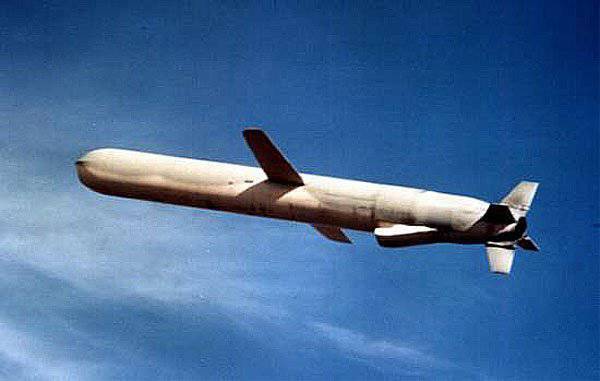
In the United States, the development of advanced missile weapons of operational and tactical purposes began to be actively pursued relatively recently. The development of SLCMs launched in 1972 in the year was carried out with large delays, due to the fact that the control systems of this type of weapon at that time were not perfect, the missiles deviated from the set course and did not achieve the required accuracy of fire.
Since the 1985 year, due to the concentration of significant financial resources, scientific potential and production capacity, the United States has taken a leading position in the West in the development of airborne and sea-based CD.
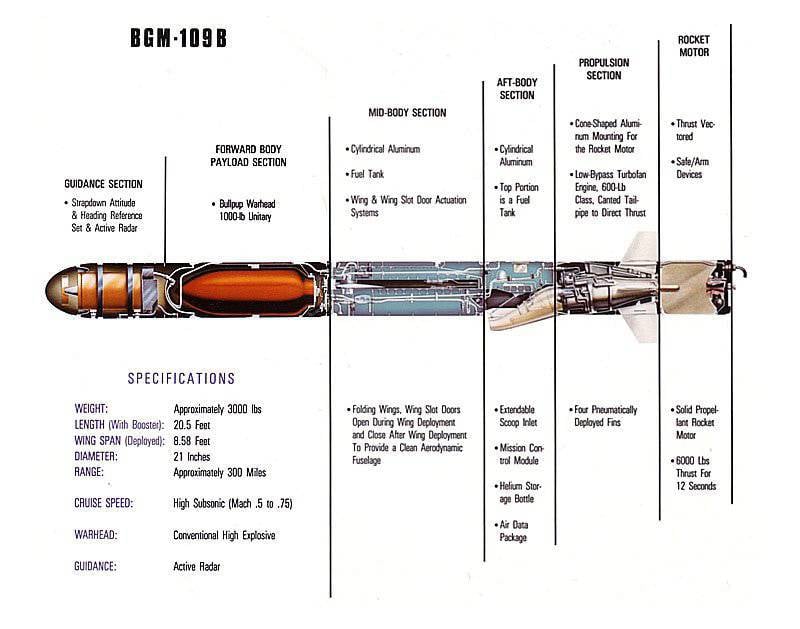
Describing the arsenal of SLCMs that were produced and entered into service by the American Armed Forces of that time, it should be noted that an absolute majority of them were carried out in the nuclear version, which was caused by the requirements of the US national military strategy under the conditions of a bipolar world. Only at the beginning of 1987, the US military-industrial complex (MIC) for the most part was reoriented to the production of conventional SLCM, aided by events that occurred in the USSR at the end of 80-s. The military-political leadership of the United States approved the implementation of several programs for the development of the Kyrgyz sea and air-based, as well as the re-equipment of missiles armed with nuclear warheads into conventional ones.
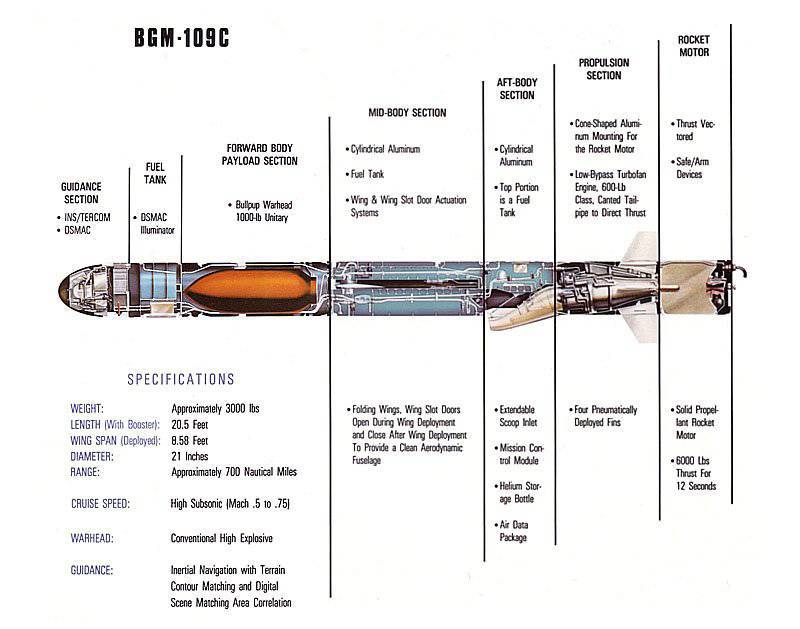
In particular, the efforts of the US military-industrial complex focused on increasing the production rate of three basic variants of sea-based Tomahawk-type Block II KR, which was assigned the BGM-109 index:
• BGM-109B - anti-ship (TASM - Tactical Anti-Ship Missile) - designed to arm surface ships;
• BGM-109С - for strikes against ground targets with a unitary warhead (BGCH, TLAM-C);
• BGM-109D - for strikes against ground targets, equipped with a cluster warhead (CU).
In turn, the SLCM BGM-109A (TLAM-N), designed to strike ground targets with a nuclear warhead, starting in 1990 with the actions of forces fleet at sea on ships is not deployed.
Compliance of SLCMs in the usual equipment with the US-accepted “cost / effectiveness” criterion was demonstrated during Operation Desert Storm in 1991 against Iraq.
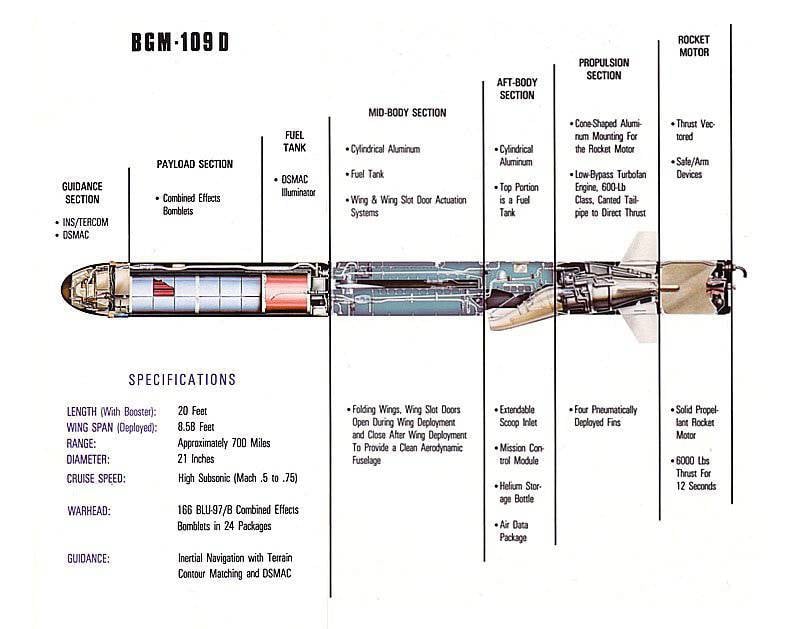
It was the first large-scale military operation in which modern cruise missiles were used, intended to strike at ground targets. The intensity of their use has steadily increased as the real advantages of this type of weapon over others have come to light. Thus, during the first four days of Operation Desert Storm, only 16% of strikes fell to the share of cruise missiles. However, after two months of the campaign, this figure was 55% of the total number of all air strikes inflicted *.
* Of the total number of cruise missiles launched, about 80% fell on sea-based CDs.
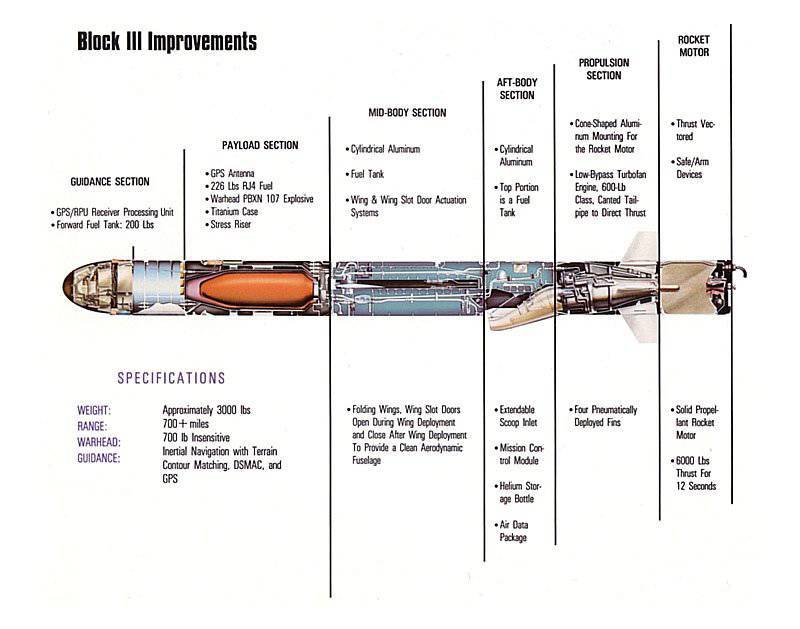
From surface ships and submarines of the US Navy deployed in positions in the Mediterranean and Red Seas, as well as in the Persian Gulf, 297 launches of Tomahawk-type SLCM (TLAM-C / D) were performed, of which 282 effectively hit the designated targets (6 KR refused after launch). Due to technical failures of the missiles, nine launches did not take place.
A new tactical approach to the use of the CD, which was implemented during the operation, was their use for hitting power grids. In particular, a number of Tomahawk-type SLCMs were loaded with cluster warheads with a special compound to destroy power grids (coils with graphite filament, which caused short circuits of power grids).
During the operation, the use of the CD eliminated the loss of both aircraft and pilots. In addition, due to the low reflective surface compared with aircraft and low approach heights, rocket losses on approaches to targets are sharply reduced. As a result, one of the main advantages realized by the command of the joint grouping during an air offensive operation was the possibility of using cruise missiles as the forward echelon necessary to suppress enemy air defenses. Thus, the SLCM has secured the status of the main shock weapons used at the initial stage of an armed conflict.
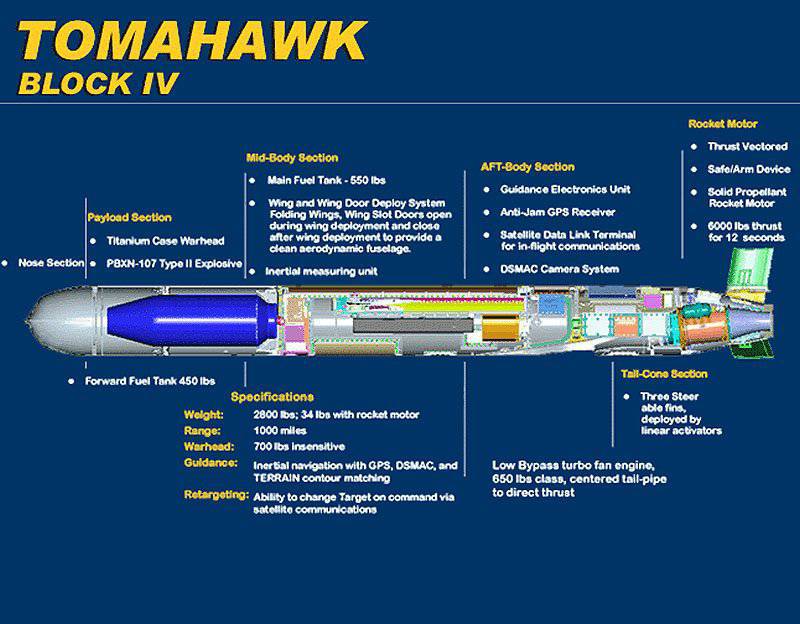
Another clear advantage of using Block III SLCMB, confirmed during Operation Desert Storm, is their all-weather condition. KR hit targets, regardless of the presence of precipitation (rain, snow) and clouds, subject to strikes both day and night.
Thus, the advantages of cruise missiles that have been identified during the entire VNO over other weapons are obvious and significant. However, this type of weapon has its drawbacks. Among the main ones is the long term preparation of missiles for use, that is, the preparation of a flight mission. For example, in Operation Desert Storm, 80 h was required to prepare for the combat use of Tomahawk SLCM because of the need to load digital maps of the route to the target into the Terkom / Digismek program (even with these images at the disposal of operators ). Problems with planning SLCM flight missions arose, moreover, due to the terrain features in the impact object area: the terrain was too flat and flat (no characteristic landmarks) or too rugged to allow masking of the object. Thus, it was required to enter the flight approach routes for such an area into the flight missions of the SLCMB, the relief of which made it possible to effectively use the capabilities of the onboard control system of the rocket. This led to several Tomahawk SLCMs approaching the object along the same route, as a result of which the missile losses increased.
During Operation Storm in the Desert, the low effectiveness of this type of weapon during strikes against moving targets — mobile launchers of ballistic missiles (none were destroyed by SLCM), by suddenly detected targets.
The conclusions reached by the US Department of Defense experts following the operation in Iraq forced the country's military-political leadership to reconsider some approaches to the implementation of programs for the creation and development of promising cruise missiles. As a result, already in the fiscal year 1993, the country's Ministry of Defense began implementing a new program, the priority areas of which were the improvement of the tactical and technical characteristics of the existing different-purpose CDs and the development of new-generation missiles based on them.
In April of the same year, the US Navy received the first batch of Tomahawk SLCM of the new modification (Block III) with GPS satellite navigation system receivers, which ensured approach to the target from any direction and required only one image of the terrain for the SLCM flight program trajectories. The use of such a navigation system made it possible to significantly reduce the time required for planning and preparing missiles for use, however, the accuracy of the guidance of the SLCM only according to the GPS data was low. This problem was proposed by American experts by introducing differential GPS in the development of a subsequent modification of the rocket.
The Tomahawk Block III SLCM is equipped with a new warhead, the mass of which has decreased from 450 to 320 kg. Compared with the Tomakhok Block II SLCM SEC, it has a more durable body, which in 2 times increases the penetration characteristics of the SLCM of the previous modification. In addition, the combat head of the SLCM is supplied with a fuse with a programmable time delay for the detonation, and the increased supply of rocket fuel made it possible to bring its flight range to 1 600 km. Finally, for the SLCM variant used from submarines, an improved starter accelerator was introduced, which made it possible to bring the firing range to the level of the ship variant.
Programming the time to approach the target allows you to attack it simultaneously with several missiles from different directions. And if earlier the flight mission for Tomahawk SLCM was planned and introduced on bases in the USA, now the fleet has introduced a new system of this kind - the on-board planning system APS (Afloat Planning System), which reduces the time for preparing missiles for combat use by 70%
The following modification of Tomahawk SLCMB - Block IV - was developed to solve percussion tasks at the tactical level and is accordingly classified as the Tactical Tomahawk SLCMB. The new modification, designed for use from surface ships, airplanes, submarines to destroy both sea and land objects, is the most sophisticated CD of this class in terms of its tactical and technical characteristics. Its guidance system has new capabilities for target identification and re-targeting in flight by introducing communication / data transfer systems with airplanes and space observation / control devices. The technical ability of SLCM to patrol in the area during 2 h for additional exploration and selection of targets was also provided.
Preparation time for combat use is reduced by 111% compared to SLCM Block 50. Finally, according to US military experts, the Tactical Tomahawk SLCM (Block IV), due to its ability to use a wider range of targets (including NK), will reduce the overall number of deployed SLCMs on 40%
As in the case of the operation “Desert Storm”, where the US Armed Forces acquired the necessary experience of using maritime and air-based cruise missiles in conventional equipment, the possibility of practical (combat) use of the latest SLCM modifications was realized by them during the peacekeeping operation in Iraq December 1998 of the year (Operation “Desert Fox”), as well as when conducting massive air strikes on Yugoslavia in March – April of 1999 (“Decisive force”).
So, at the end of 1998 of the year, as part of Operation Desert Fox, the US Armed Forces actively used Tomahawk SLCMB (Block III), as well as modernized ALCMs such as CALCM (Block IA). At the same time, due to the fact that cruise missiles of new modifications had much higher performance characteristics, it was possible to minimize most of the significant shortcomings that emerged during the combat use of the Kyrgyz Republic in Operation Desert Storm.
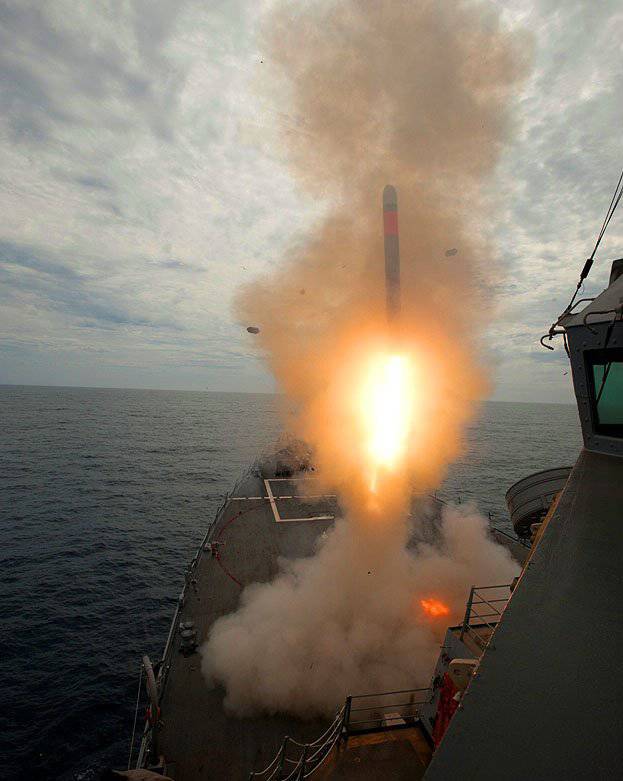
In particular, thanks to the improvement of the navigation systems of the Kyrgyz Republic, as well as the availability of a unified flight program planning system, it was possible to reduce the temporal missile preparation rate for use on average to 25 hours. In turn, this allowed the United States to continuously deliver massive missile strikes on Iraq’s particularly important facilities. for almost 12 day. As a result, the share of the Kyrgyz Republic in Operation Desert Fox accounted for about 72% of all air strikes.
In total, over the course of the entire operation, the contingent of the American armed forces used more than 370 cruise missiles of various bases, of which only 13 for technical reasons did not hit the designated targets.
However, as foreign military experts noted, in essence, the Iraqi Armed Forces did not have a full-fledged air defense / missile defense system, and therefore the combined group was able to ensure the delivery of active massive air strikes, and the cruise missiles, in turn, did not have real opposition from the enemy. Accordingly, an objective assessment of the effectiveness of the combat use of SLCM new modifications can be given quite arbitrarily. In this sense, the experience of the combat use of these missiles in an operation against the Federal Republic of Yugoslavia, whose armed forces used non-standard tactics of using their own air defense system, is therefore much more convincing, and therefore the use of cruise missiles had its own characteristics.
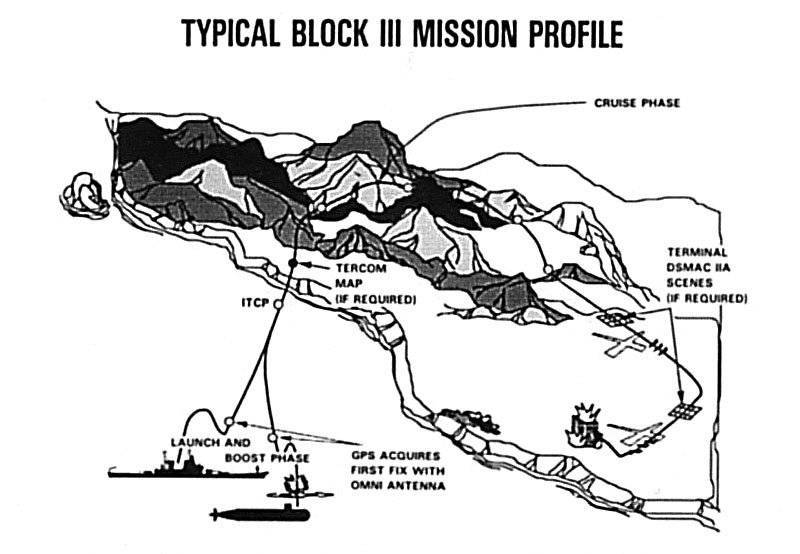
24 March 1999 of the year, in accordance with the decision taken by the leadership of the Alliance, the Allied Forces of NATO have launched an air offensive operation (UPO) against the FRY "Resolute Force". The operation was supposed to be carried out in three stages:
- in the framework of the first stage, it was planned to suppress the Yugoslav air defense system and disable the most important military facilities located in Kosovo;
- in the framework of the second stage, it was planned to continue the destruction of objects throughout the territory of the FRY, with the main efforts planned to focus on the destruction of troops, military equipment and other military facilities, up to the tactical level;
- during the third stage it was planned to inflict massive aviation attacks on the main state and military-industrial facilities of the FRY in order to reduce the country's military-economic potential and suppress the resistance of the Serbs. To participate in the operation was created
a powerful group of NATO air and naval forces, which at the first stage has about 550 combat aircraft and 49 combat ships (including three aircraft carriers).
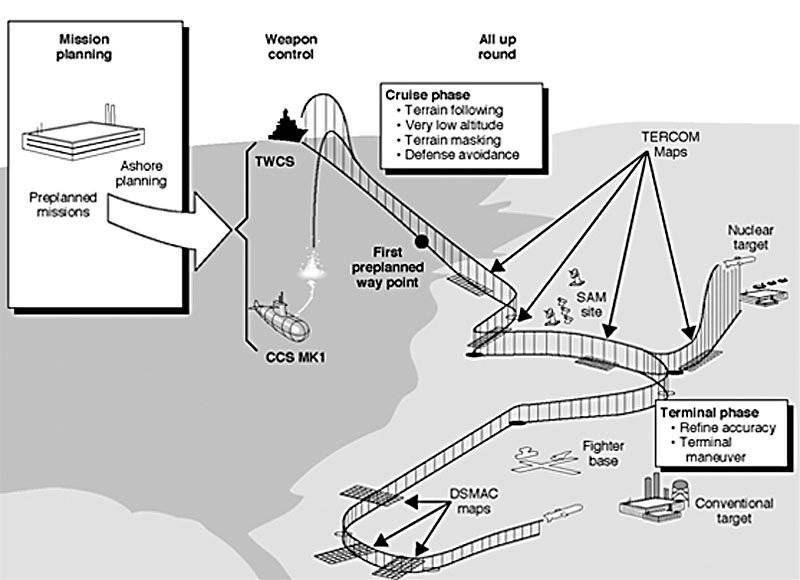
To accomplish the tasks outlined in the first phase of the operation, NATO's Allied Forces during the first 2 days struck two massed air and missile strikes (MARA) each lasting more than 3 hours. The standard scheme adopted in the US Armed Forces was used. The tactical building of forces included three echelons: a train of cruise missiles, an air defense breakthrough, and a strike.
When attacking air and missile strikes, a special place was given to sea-based cruise missiles, which were part of all three echelons. This was due to the fact that the presence of NATO naval ships in the operational mission area allowed them to launch massive missile strikes at military and industrial facilities of the FRY at almost any time and, if necessary, block the Otranto Strait connecting the Adriatic and Ionian Seas. US Navy ships - carriers of SLCMs located in the conflict zone, periodically replenished their cruise missile ammunition from warehouses on the southeastern coast of Italy.
In turn, the attacks of the ALCM were an integral part of only the first echelon of the MAR, due to the fact that the number of carrier aircraft of the Kyrgyz Republic was limited, and their use was hampered by counteracting enemy air defenses.
In particular, preparing for a long-term armed confrontation with NATO, the command of the armed forces of Yugoslavia decided to use tactics to maximize the preservation of air defense forces and assets. The minimal use of active and passive air defense systems, especially in the early days of the operation, came as a complete surprise to the NATO command. The radar stations for detecting airborne targets were turned off, which practically did not allow the Alliance aviation to use HARM anti-radar missiles.
Armed Forces of the FRY used mainly mobile SAM "Cube" and "Strela". Their target targeting radar was switched on for a short period of time, which was necessary to capture the target and launch a rocket, after which the SAMs rapidly changed their positions. Masked false positions were also effectively used, at which NATO aircraft struck.
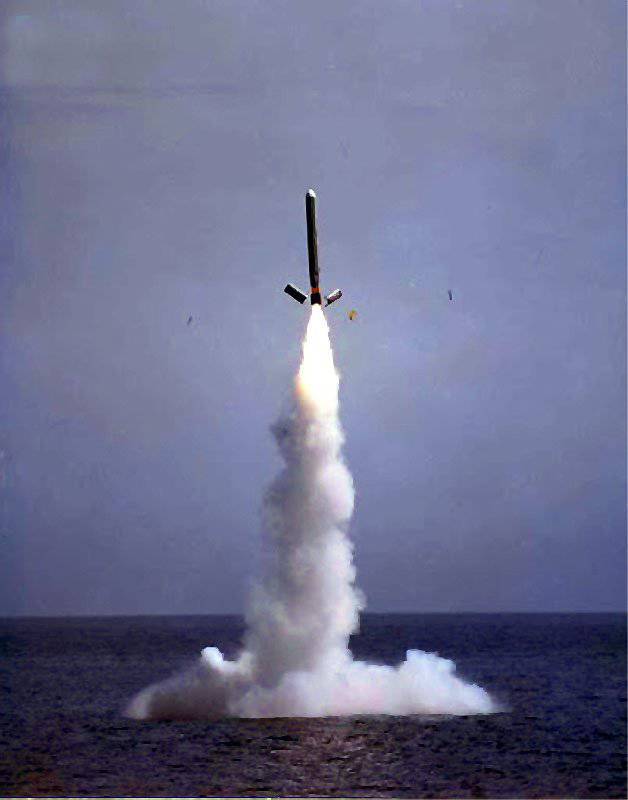
As a result, in the course of two NATO air-launched missile strikes, more than 220 cruise missiles of various bases (more than 30% of all used in the operation) were used over 65, of which targeted targets hit up to 80% produced by the CD (according to preliminary estimates, this figure should be XNUMX% ). Ten missiles were shot down and six taken from the target.
At the same time, Western experts believe that, although such an indicator of the effectiveness of the use of the CD was not high enough, the achievement of the goals set for the first stage of the air offensive operation became possible mainly due to the use of guided missile weapons. That is, the use of cruise missiles, and especially Tomahawk-type SLCMs (Block III), made it possible, despite the non-standard tactics of using air defense forces and facilities of Yugoslavia, to ensure the defeat of strategically important enemy targets and to gain air superiority.
Thus, during the first phase of the operation, the main airfields of combat aircraft of the Air Force of Yugoslavia were put out of operation, and therefore the aircraft of the FRY Air Force were used rather limitedly. Great damage was caused to stationary air defense objects (KP VVS and air defense) and stationary radar. As a result of this, and also as a result of the active use by the Alliance of EW facilities, the centralized control of air defense forces and facilities was practically disrupted. Units and subdivisions of air defense acted decentralized in their areas of responsibility. Due to the equipment of the Kyrgyz Republic with high-precision inertial navigation and guidance systems, they were actively used to destroy important state administrative and industrial facilities, including military-industrial complex enterprises and large enterprises of the civilian sector, control and communication facilities, oil refineries and storage tanks, television and radio relay masts bridges. The average number of strikes against targets ranged from one to four or six CU (repeated blows), depending on the size of the object, its security, accuracy of impact, etc.
In total, during the first phase of the air offensive operation of the KR, the 72 object was struck, including 52 military and 20 industrial civilian targets.
Following the completion of the first phase of the operation, the alliance command, faced with a non-standard situation in solving the VNO tasks (the use of "guerrilla" tactics by Yugoslavia’s air defense forces), abandoned the tactics of massive use of forces and means and proceeded to systematic combat operations with selective and group strikes on newly identified or previously unaffected objects. That is, in the subsequent stages of the operation, implementing similar “disturbing tactics”, NATO’s armed forces shifted their main efforts from destroying the Yugoslav air defense system to the destruction of other military facilities, as well as civilian infrastructure, directly ensuring the combat capability and maneuverability of the FRY troops. Under these conditions, the main method of using air attack weapons was a flexible combination of continuous reconnaissance of Yugoslavia’s facilities followed by group and single air-missile strikes, with the advantage being given to sea-based cruise missiles.
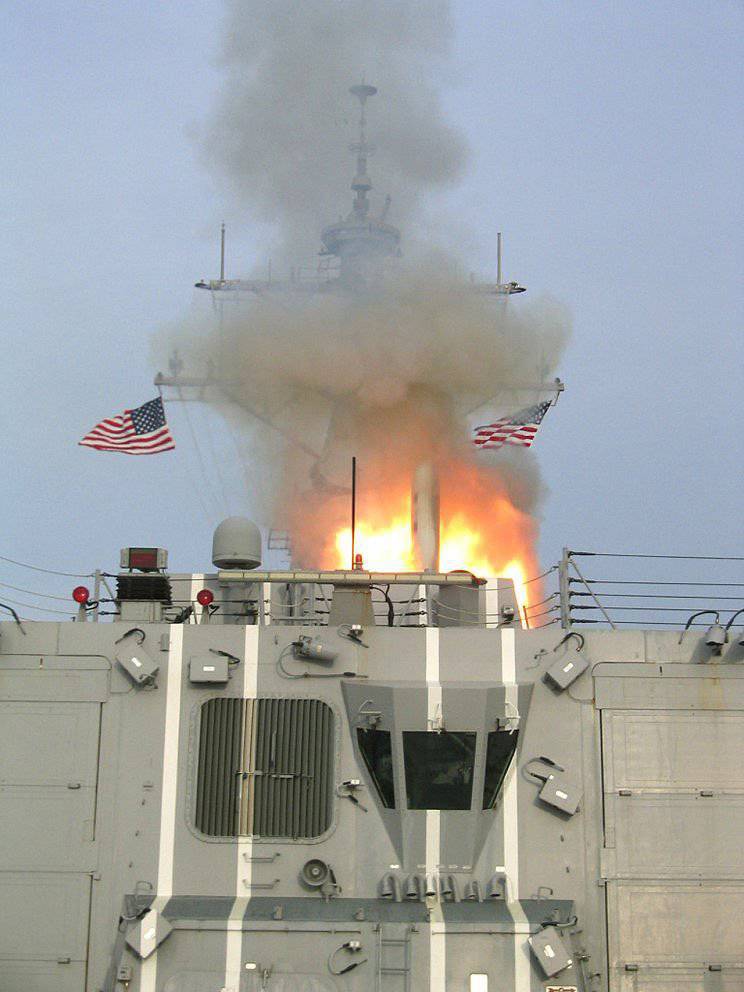
To this end, the composition of the NATO naval base was increased to 57 ships of various classes, including four aircraft carriers. The consequence of the fact that the most advanced controlled winged weapons are held by the US Armed Forces was the most significant force squad allocated by the United States to participate in the operation. Thus, the NATO naval grouping on 31% consisted of US Navy warships, of which Tomahawk-type SLCM carriers - 88%. The aviation group consisted of American planes of strategic and tactical aviation of the Air Force and Navy carrier aircraft, and their total number reached 53% NATO’s entire airborne component.
In the course of systematic combat operations, the Kyrgyz Republic was effectively used, mainly at night, to defeat the reconnoitered and newly identified targets. The strikes were inflicted on more than 130 objects, of which 52 (40%) were civilian targets. First of all, industrial and infrastructure objects were affected: fuel storage facilities, repair facilities, oil refineries, bridges. In addition, in the interests of destabilizing the domestic political situation, creating chaos and panic in the country, cruise missiles delivered pinpoint strikes against civilian objects: pharmaceutical and chemical enterprises, power stations, television and radio broadcasting centers, schools and hospitals.
In general, in the course of the operation against the Federal Republic of Yugoslavia, about 700 sea-based and air-launched cruise missiles were used. At the same time, about 70% SD were used to destroy stationary objects with a high degree of protection and a strong air defense system, and 30%
- for public administration and industrial dual-use facilities. In turn, around 40 cruise missiles, following the results of the entire operation, were brought down by the enemy’s anti-aircraft defenses and 17 diverted from the target (striking false objects).
Referring to the assessment of the effectiveness of the combat use of the Kyrgyz Republic in Operation Resolute Force, Western experts also note that when the Alliance command is appointed before 40, and from the second phase of the operation - to 50 targets per day, the whole group of NATO military and airborne forces of NATO (carriers of cruise missiles) hit an average of about 30 objects. The main reasons for this lack of effective use of the CD were as follows:
- complex weather conditions that impede the full use of aircraft ALCM;
- small number of groups of aircraft - carriers of ALCM;
- relatively effective use of the Yugoslav armed forces anti-aircraft defense;
- a complex physical-geographical landscape of the enemy’s territory, which provided the Armed Forces of the FRY with the possibility of creating masked false targets and destroying the Kyrgyz Republic on bypass routes.
Thus, the use of cruise missiles of new modifications of the US Armed Forces in the Balkans ensured not only a clear advantage of NATO’s Supreme Command over its adversary, which in the shortest time allowed it to fully gain air superiority, but once again confirmed the need for further development of the CD taking into account the characteristics of their combat use which were identified during the VNO, and in particular the ability to hit moving objects in the presence of a strong air defense / missile defense system. In addition, substantial revision of cruise missile flight program planning systems is required in order to increase their resilience to the effects of REB and the ability to provide independent, automatic search and target selection. This need is also confirmed by the fact that it is much more practical to use high technologies of programming systems and only correct (assist) the Kyrgyz Republic in the course of combat operations than constantly conduct topographic surveys and adjust the terrain of almost the entire inhabited land area in order to ensure that data is stored in the onboard systems cruise missiles. In the end, even the already created database of the terrain will have to be constantly updated due to the influence of natural and climatic conditions and the activity of the person himself *.
* Already, US imperial ambitions are forcing them to accumulate and store a huge database of terrain and objects in each country, while increasing natural disasters, warming the Earth’s climate, changing coasts, the location of ice packs, glaciers, the formation and disappearance of lakes and rivers require constant mapping adjustments.
Such conclusions forced the military-political leadership of the United States to concentrate the efforts of military science and production potential on the development of new software that will allow the onboard systems of the Kyrgyz Republic to provide independent flight adjustments and target selection, as well as the possibility of using as accurate as possible in urban environments (reducing CVO missiles to the minimum values). The main requirements also indicated the need to expand the types of media from which CDs could be launched, and to increase their damaging characteristics.
In the development of the implementation of all these requirements, already in 1999, Raytheon Corporation received a large order from the US Department of Defense, which for the next three years included the implementation of the TTX program for Tomahawk SLCM, and starting with the 2004 of the fiscal year, mass production of the new Tactical Tomahawk CR ". The total Navy order will be 1 343 units.
A fundamentally new difference in the configuration of the Tactical Tomahawk SLCM will be the presence of a more sophisticated control system in its on-board systems, which will ensure precise all-weather navigation / missile guidance.
Also, work is underway to expand the types of media that can use the rocket of this modification. In particular, it is supposed in addition to the existing VLS (Vertical Launch System) system, which provides for launching the rocket in a vertical way from surface ships and nuclear submarines, to develop a launching system for SLCMs from torpedo tubes of submarines (TTL launching system - Torpedo Tube Launching). At the same time, as is the case with the Block III Tomahawk SLCM, according to their tactical and technical characteristics, the Tactical Tomahawk missile in the KPLP variant will not yield to this modification in the ship version.
In each of the armed conflicts of the last decade, where the US armed forces took part, certain tasks were set before the CD. Moreover, during the entire time period under consideration, as the combat experience of their use and the improvement of the performance characteristics of the cruise weapon was accumulated, these tasks were specified and refined. So, if in operation “Desert Storm” cruise missiles in conventional equipment essentially had to “gain credibility” and secure the status of the main attack force of the forward echelon, then in VNO “Decisive Strength”, in addition to performing this function it was necessary to solve specific problems of high-precision destruction of objects in the conditions of urban development and newly identified (explored) objects. In turn, the successful solution of these tasks predetermined the large-scale use of this type of weapon in the antiterrorist operation in Afghanistan, where more than 600 KR of sea and air basing had already been used.
Thus, the experience of the combat use of cruise missiles, which allowed the American military leadership to identify and form the main ways of their development, shows that at present this type of weapon has occupied a well-defined (important) niche: CDs are pre-empting the actions of all other forces, their attacks are powerful and cover the entire territory of the enemy. In the future (presumably by the end of 2015 of the year), given the modern pace of modernization and improvement of cruise missiles, but according to the estimates of the military specialists of the US DoD, the range of tasks that these CDs should solve will further expand and subject to a preliminarily effective information warfare up to 50% of all strikes in a given armed conflict will be inflicted by cruise missiles.
Thus, in the future, if an armed conflict is unleashed of any intensity and of any scale, the main means of achieving the set military objectives will be the integrated use of the KR of various bases.
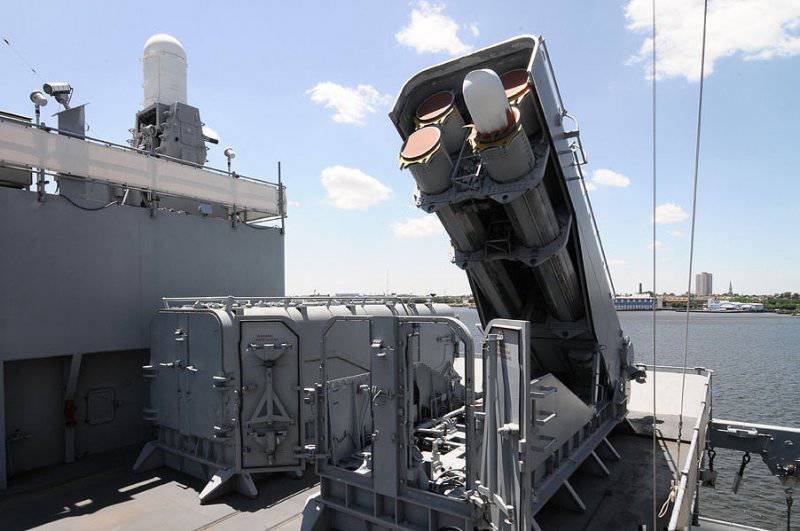
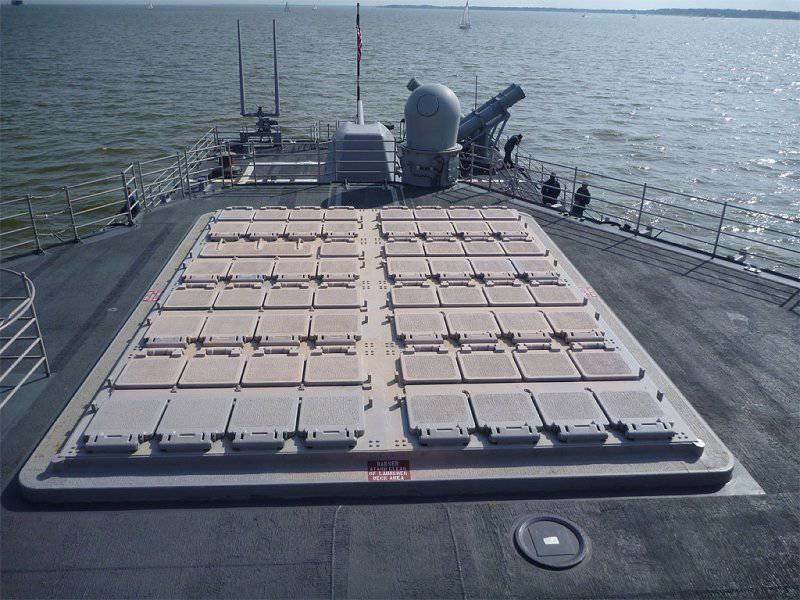
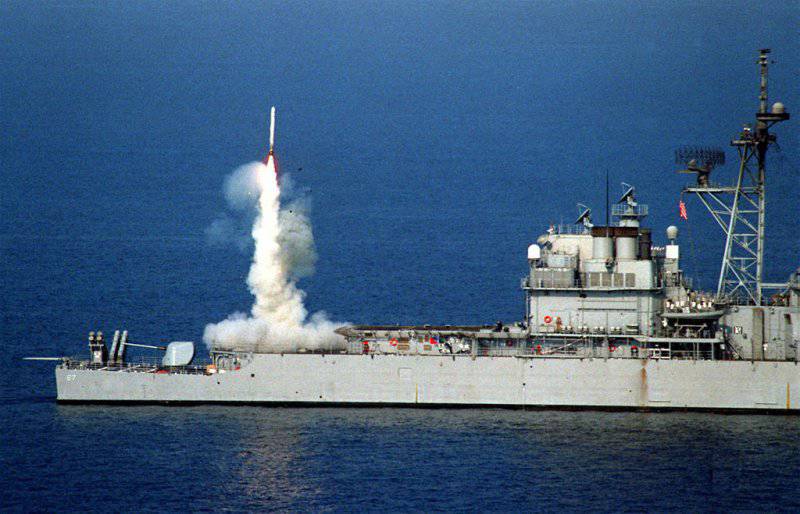
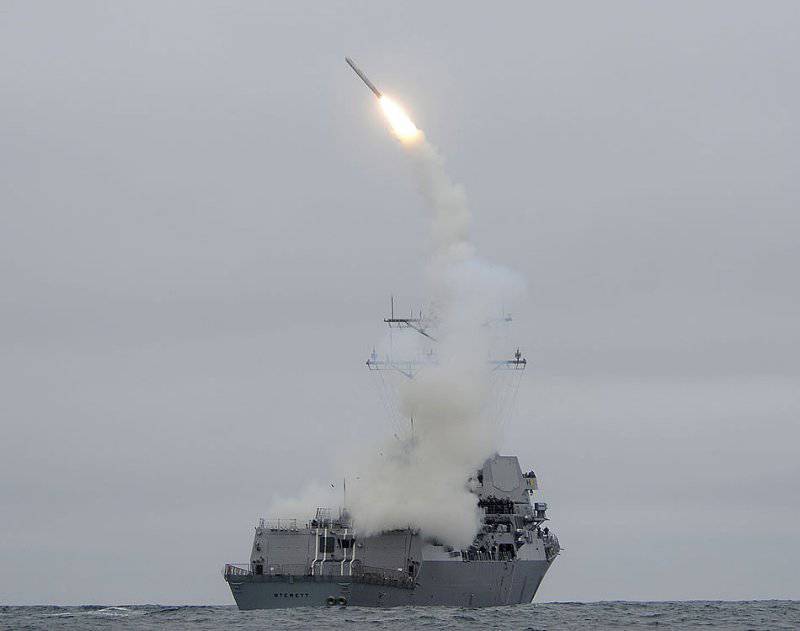
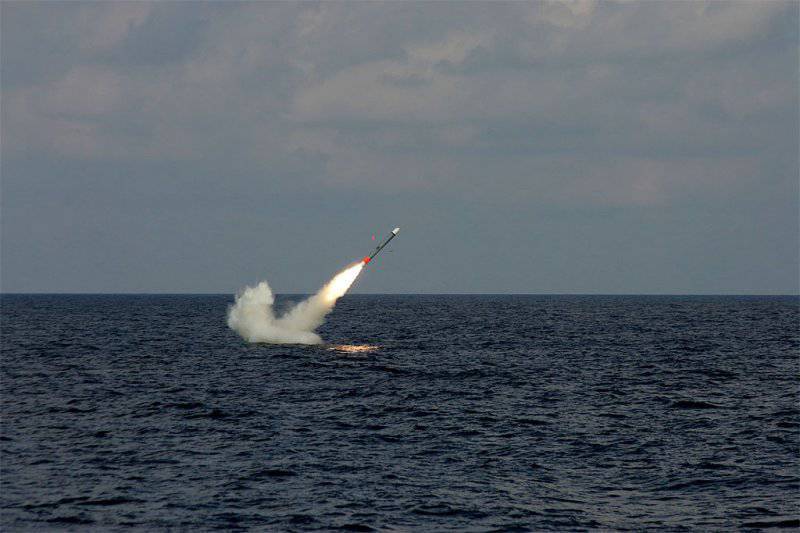
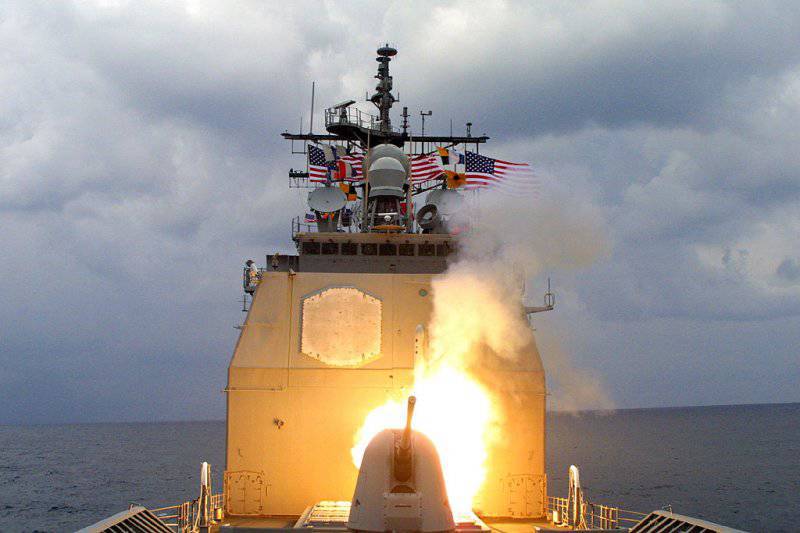
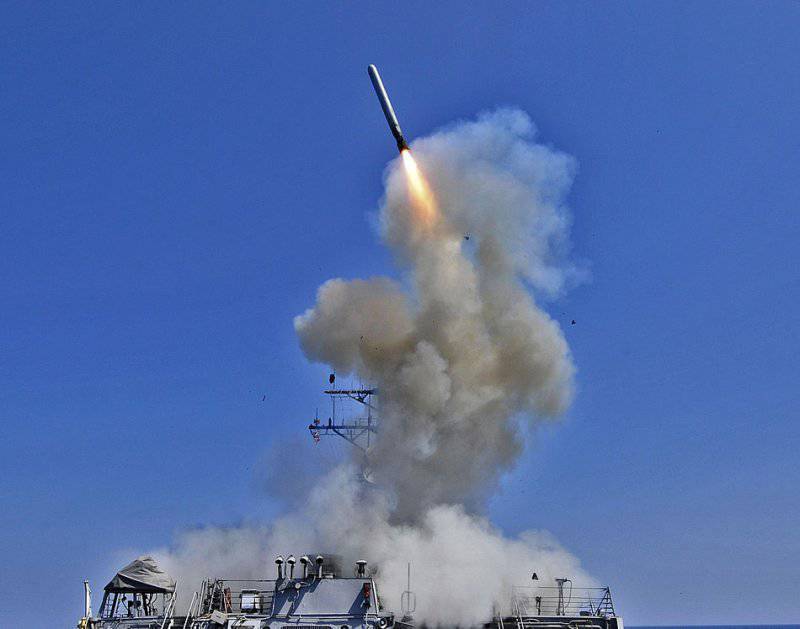
Information